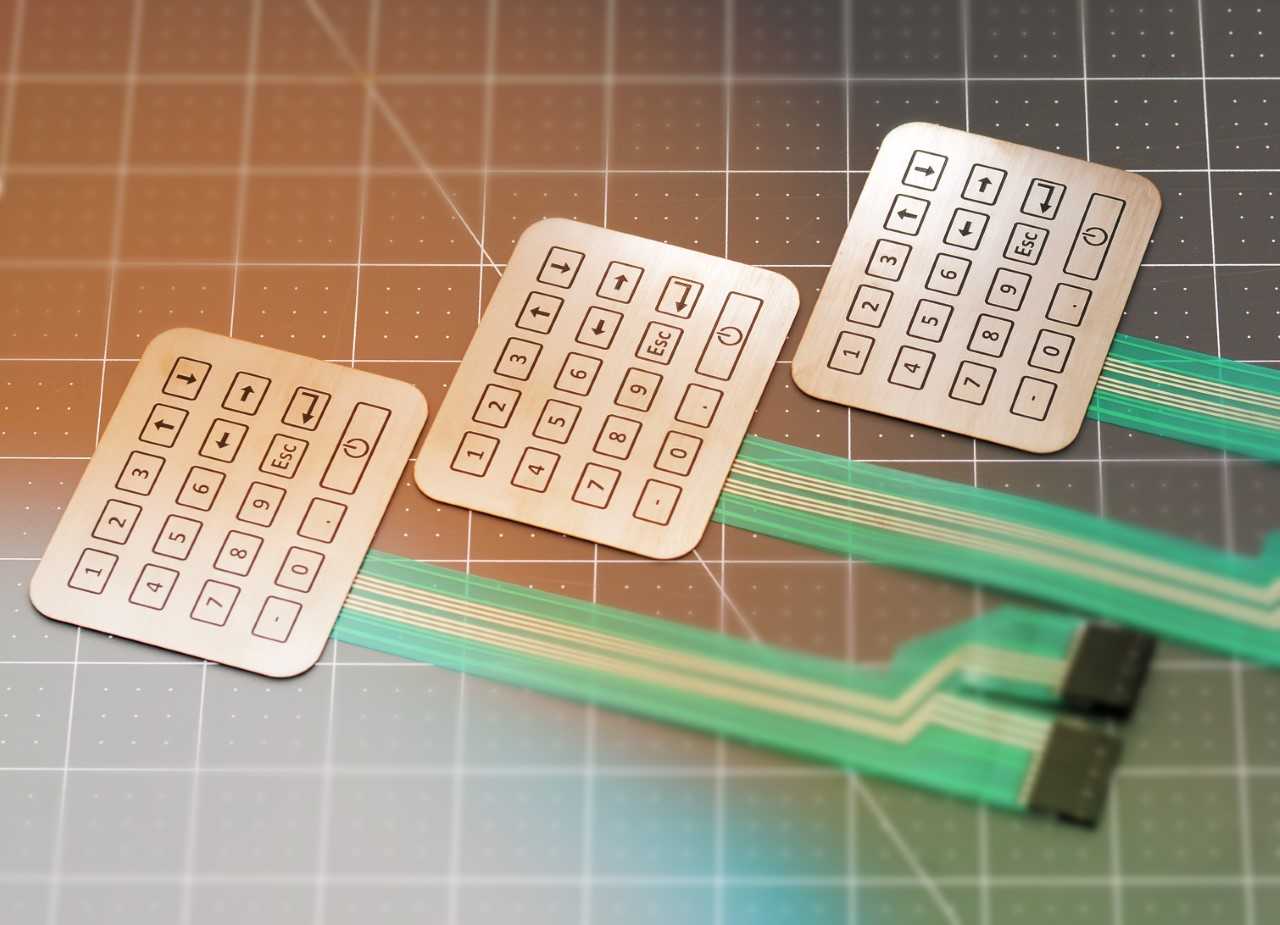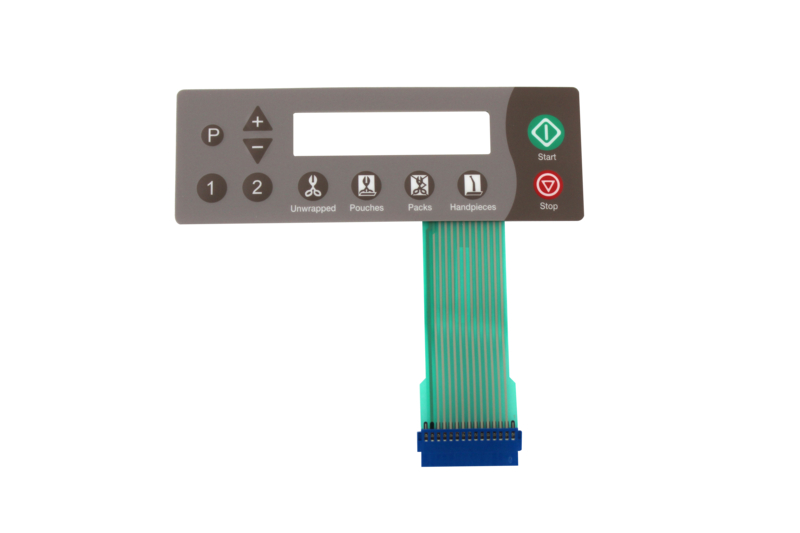Projects requiring precision should always involve a experienced membrane switch manufacturer from the start.
Projects requiring precision should always involve a experienced membrane switch manufacturer from the start.
Blog Article
Everything About Membrane Layer Switch: Recognizing Its Design and Functionality
When you think about the control interfaces in contemporary tools, membrane layer buttons often come to mind. Let's explore what sets membrane layer switches over apart from various other control systems.
What Are Membrane Buttons?

Membrane layer buttons can likewise be personalized regarding shape, size, and graphics, enabling manufacturers to produce distinct user interfaces customized to specific products. In general, membrane buttons play a substantial function in boosting user experience throughout a wide range of applications.
How Membrane Layer Switches Over Work
When you push a trick on a membrane layer button, it triggers a simple yet reliable mechanism. membrane switch manufacturer. The top layer, usually made of adaptable material, presses down onto a conductive layer beneath it.
You'll notice that the responsive responses differs based on the button style, using either a soft click or a much more noticable response. As soon as you release the key, the membrane returns to its original setting, reopening the circuit and stopping the signal. This process happens almost immediately, guaranteeing a receptive individual experience.
Membrane layer switches are preferred due to their longevity and resistance to dust and dampness, making them ideal for numerous applications, from home home appliances to medical devices. Understanding this operation aids you appreciate their widespread use.
Trick Elements of Membrane Buttons
Understanding the crucial parts of membrane buttons is fundamental for realizing their capability and design. At the core, you'll locate the graphic overlay, which supplies the visual interface for users. Underneath that, there's a spacer layer that divides the circuit layers, ensuring that they do not make call until pressed. The circuit layer is where the magic occurs; it includes conductive traces that finish the circuit when you press the button. An additional essential element is the adhesive support, allowing the button to follow surface areas safely. The protective layer guards versus environmental factors and wear, prolonging the switch's life-span. Each component plays a significant role in ensuring reputable efficiency and customer interaction. By comprehending these parts, you'll obtain understanding right into exactly how membrane changes operate and their significance in numerous applications.
Products Used in Membrane Switch Style
The efficiency and durability of membrane switches greatly depend on the products utilized in their design. You usually encounter polyester and polycarbonate as primary substrates because of their exceptional strength and flexibility. These products stand up to scrapes and chemicals, making them suitable for demanding atmospheres.
The conductive layers often utilize silver or carbon, selected for their dependability and conductivity. membrane switch manufacturer. Silver provides premium performance, while carbon is a cost-efficient alternative. For the overlay, you may consider a matte or shiny finish, depending upon your visual requirements and individual experience
Make particular to choose adhesives that stand up to environmental aspects like temperature and humidity. Choosing the best materials will guarantee your membrane switch stands the test of time.
Layout Factors To Consider for Membrane Layer Buttons
While designing membrane layer buttons, it's vital to take into account various aspects that affect their capability and customer experience. Begin by concentrating on the format and switch dimension; make sure they're user-friendly and easy to navigate. Think about the responsive responses you desire to provide-- will users need a noticeable click or a softer touch? Furthermore, assume regarding the materials you'll utilize, as they'll affect durability and looks.
Do not forget the visuals style; clear labeling and shade comparison are considerable for presence. Verify your style suits environmental factors, like dampness or temperature level variations, which can affect performance. Remember the importance of testing prototypes with actual users to collect comments and make needed modifications. This iterative process assists you fine-tune the design, validating it meets both functional and visual requirements properly. By very carefully taking into consideration these elements, you'll create a membrane button that improves usability and contentment.
Applications of Membrane Switches
Membrane layer switches are versatile elements discovered in numerous applications, from industrial tools to customer electronics. You'll see their influence in machines that this article require long lasting interfaces and in tools that gain from streamlined layouts. Recognizing these applications helps you appreciate the functionality and functionality of membrane layer buttons in day-to-day innovation.
Industrial Devices Use
When you're looking to enhance the performance of industrial equipment, membrane buttons offer a reputable option that incorporates longevity with straightforward style. These switches are excellent for rough environments, giving resistance to dust, moisture, and chemicals. Embrace membrane switches to streamline your operations and enhance overall performance.
Consumer Electronics Combination
In the domain name of consumer electronics, membrane switches play a necessary function in improving customer communication look at this web-site and tool functionality. You'll locate them in gadgets like microwaves, push-button controls, and gaming consoles, supplying a smooth way to interact with technology. Their smooth design enables for easy combination into various products, making controls user-friendly and straightforward. With their capability to incorporate graphics and backlighting, you can take pleasure in a modern aesthetic that matches the tool's overall look. Membrane switches likewise assure durability and resistance to dust and moisture, prolonging the lifespan of your electronics. By picking membrane buttons, you boost not just the functionality however additionally the design of your gadgets, making day-to-day interactions smooth and enjoyable.
Advantages and Disadvantages of Membrane Layer Buttons
While membrane layer buttons supply a variety of benefits, they likewise come with some drawbacks that you ought to think about. One considerable benefit is their compact style, making them suitable for space-constrained applications.

Nevertheless, there are drawbacks. Membrane layer switches can have a much shorter lifespan compared to mechanical buttons, especially under hefty usage. They can also be much less tactile, which could affect customer comments during procedure. If damaged, repairing them can be difficult and often calls for full replacement. Inevitably, their sensitivity to severe temperatures and environmental problems may limit their efficiency in specific setups. Balancing these pros and cons will assist you identify if membrane layer buttons are the right fit for your job.
Frequently Asked Questions
The Length Of Time Do Membrane Changes Generally Last?
Membrane switches over typically last between 5 to one decade, relying on use and environmental conditions. You'll want to review aspects like wear, direct exposure to wetness, and temperature variations to gauge their long life properly.
Can Membrane Layer Switches Over Be Customized for Certain Designs?
Yes, you can customize membrane layer switches to fit details designs (membrane switch manufacturer). You'll have the freedom to select shades, forms, and layouts that match your task's requirements, guaranteeing they blend seamlessly with your overall visual
What Is the Expense Range for Membrane Layer Switch Production?
The price variety for membrane layer switch manufacturing generally drops between $1 and $10 each, depending upon elements like layout intricacy, quantity, and materials. You can get quotes from producers to discover the most effective alternative.

Are Membrane Layer Changes Waterproof or Resistant?
Membrane layer switches can be developed to be water resistant or resistant, depending upon materials utilized and construction methods. If you require them for wet settings, assure you specify those needs throughout the style process.
Just How Do Membrane Switches Over Compare to Traditional Buttons?
Membrane buttons are normally thinner and extra versatile than standard buttons, using a sleek layout. They're often less complicated to clean and integrate, yet may not supply the tactile responses you're utilized to with mechanical alternatives.
Verdict

Report this page